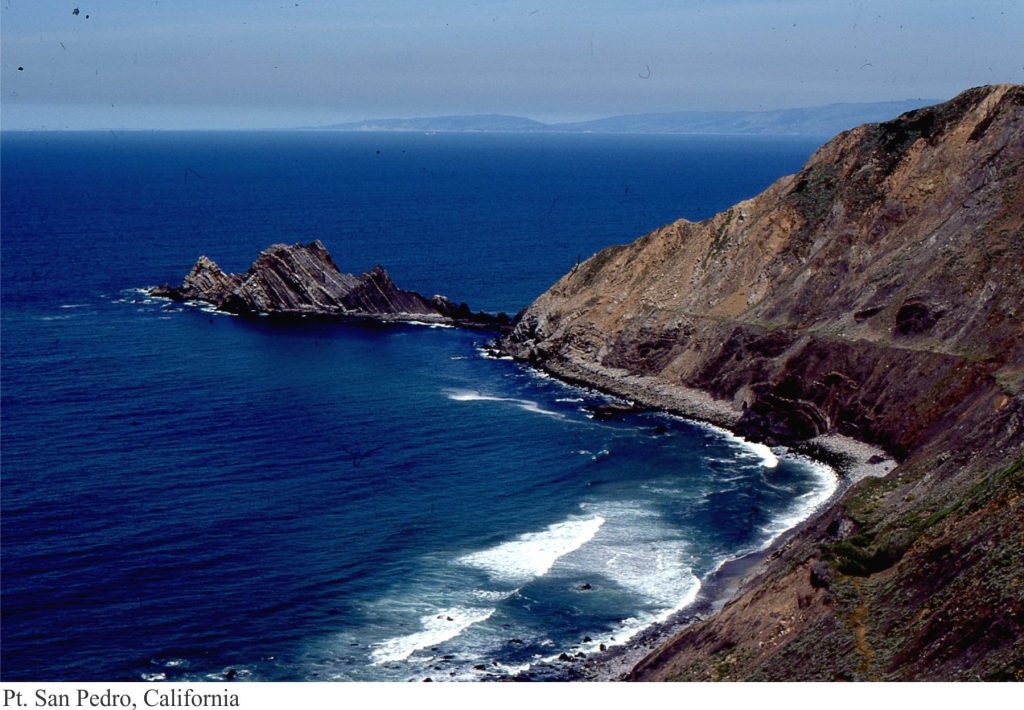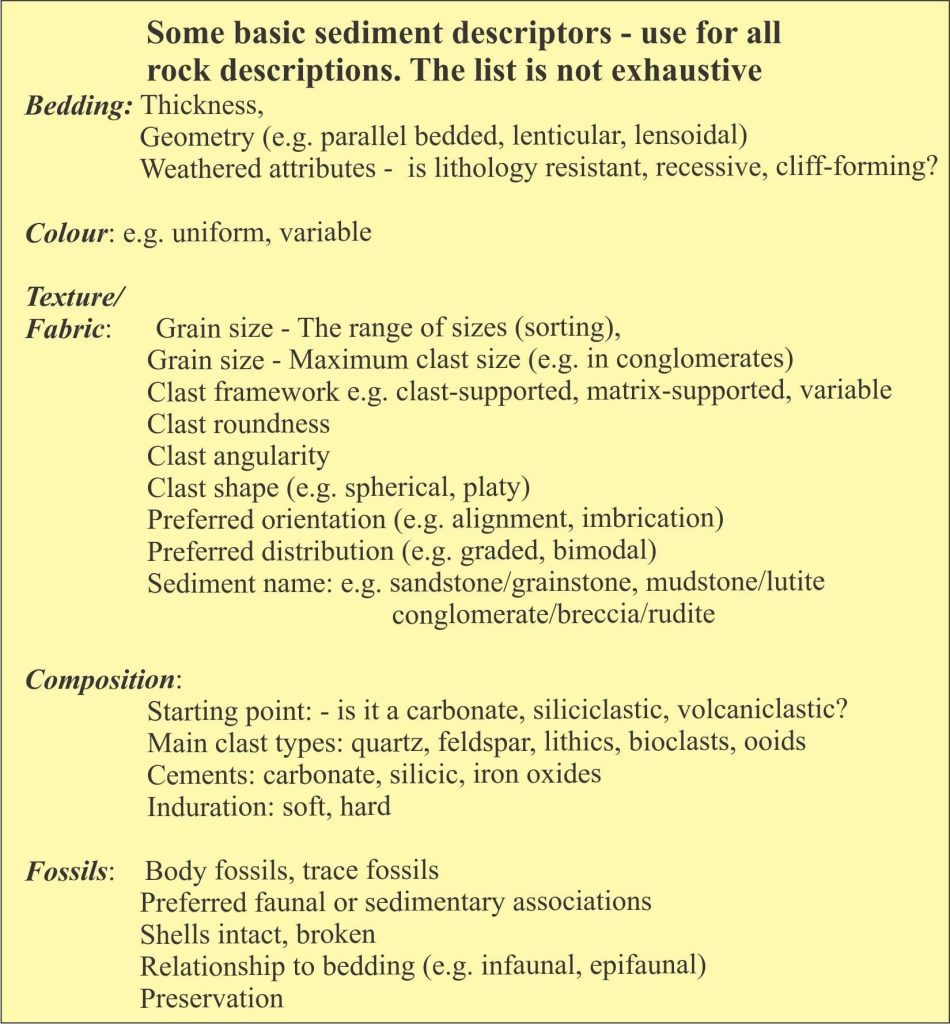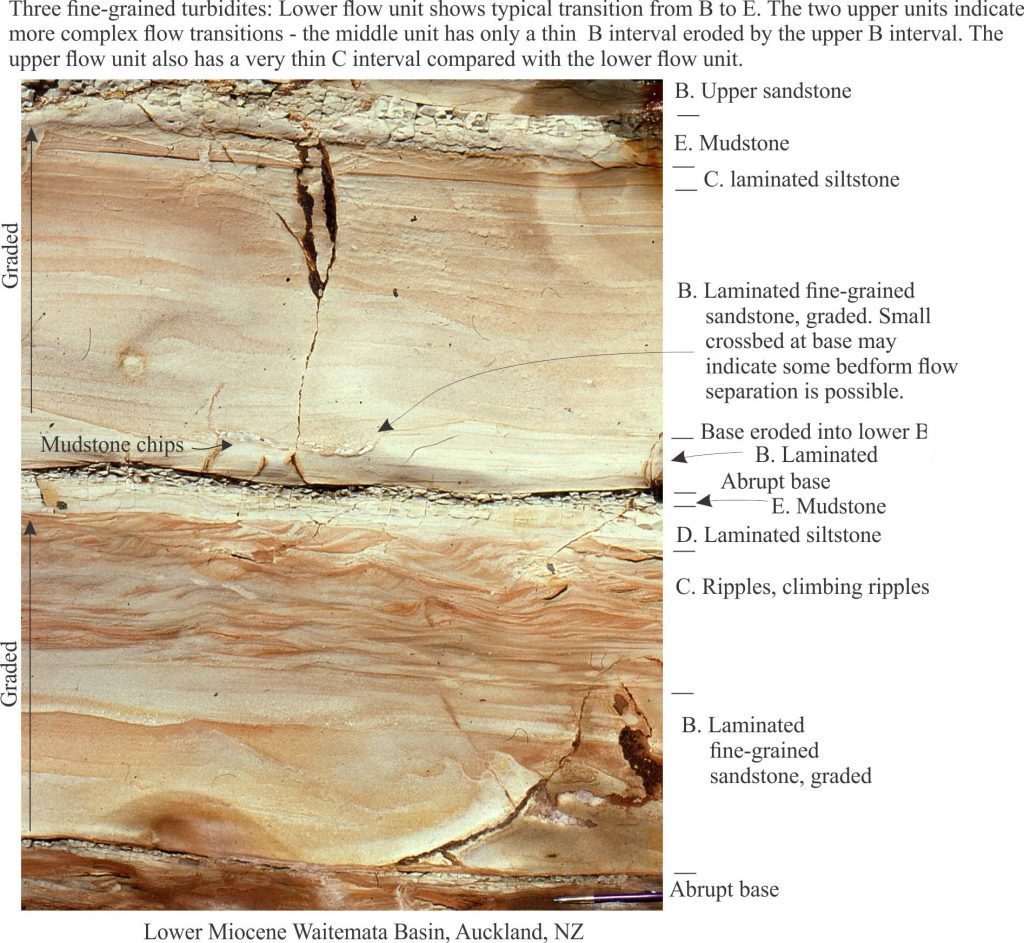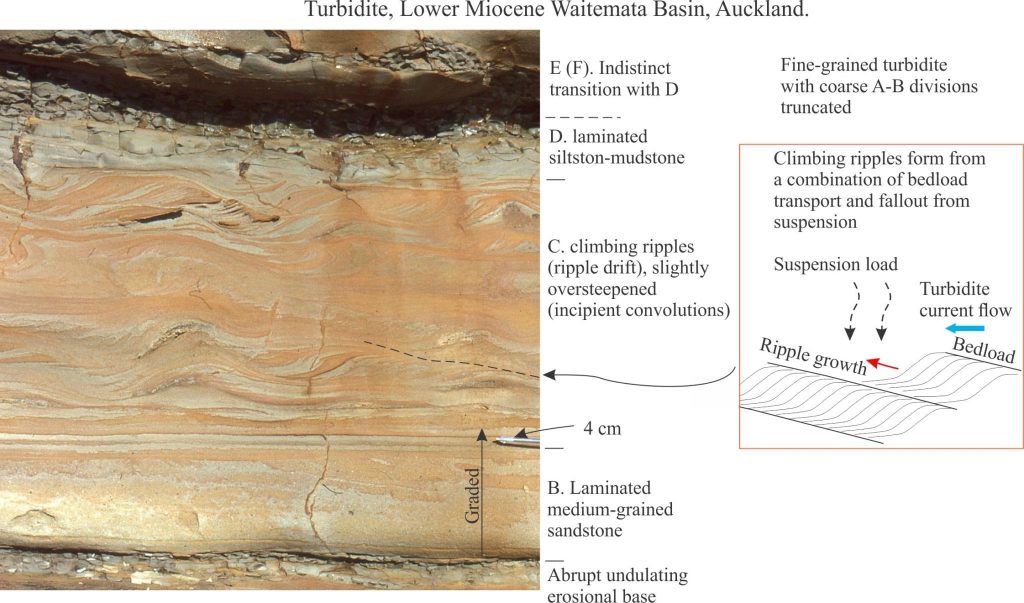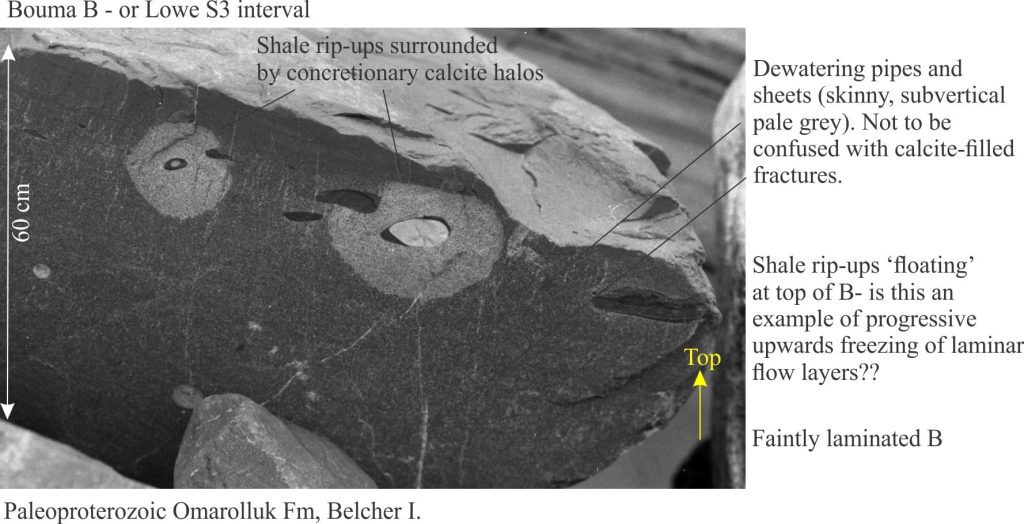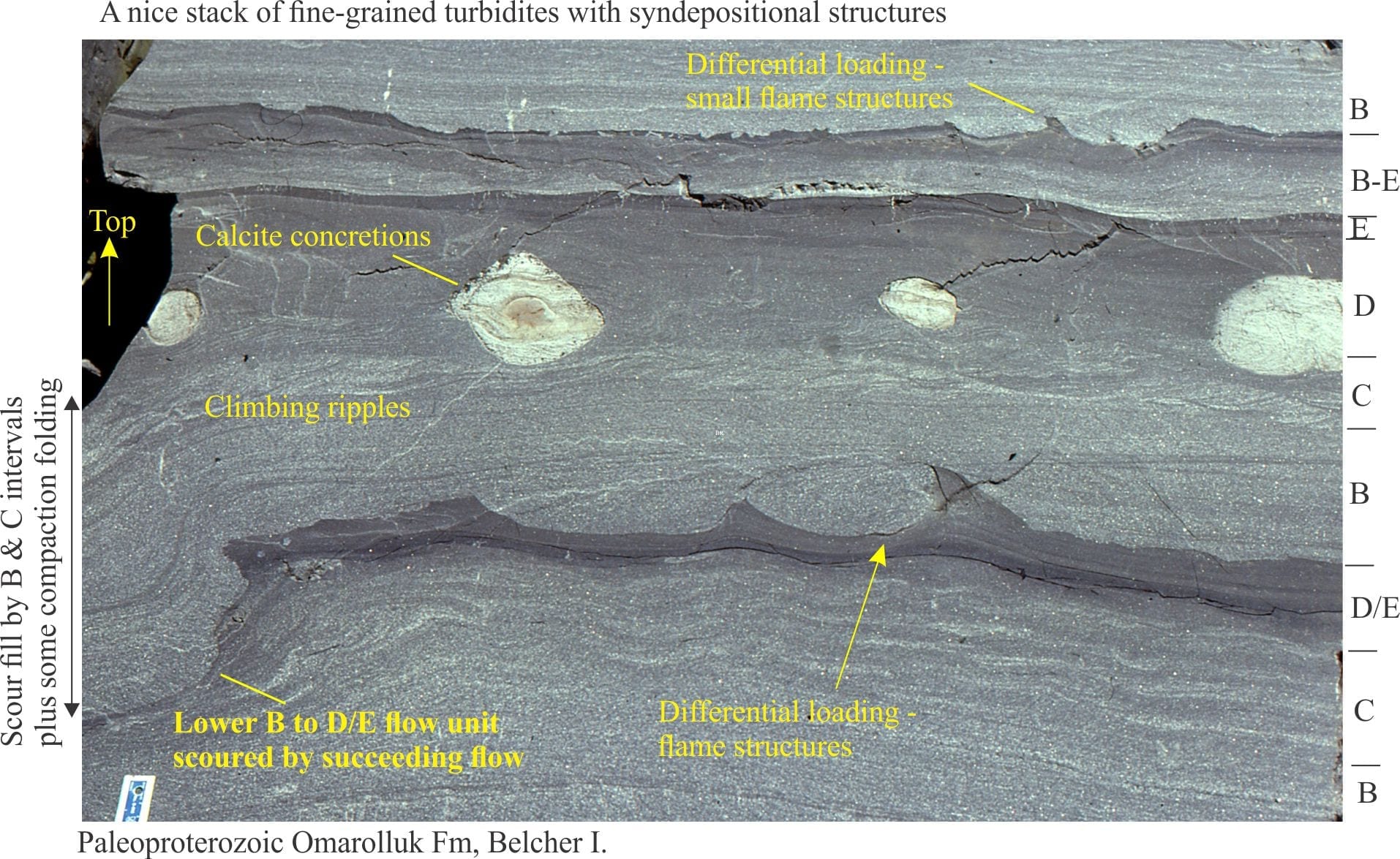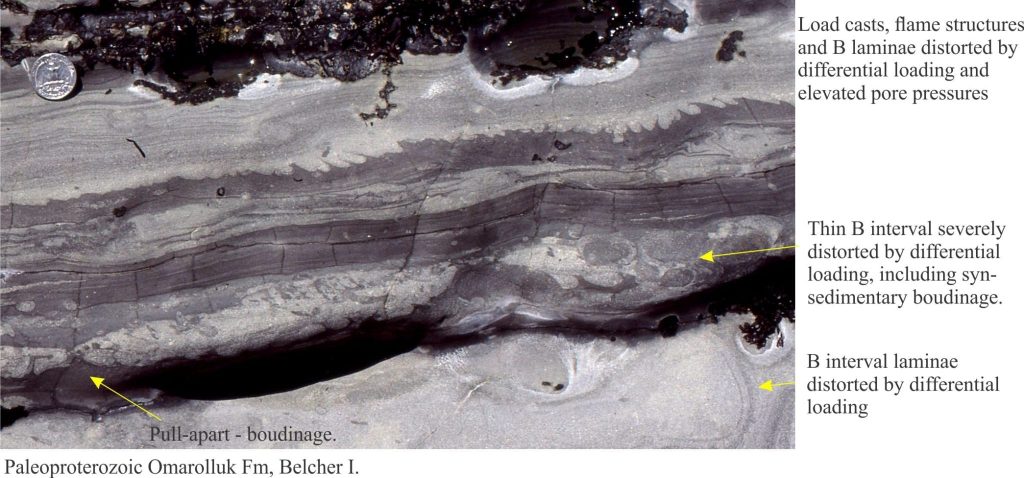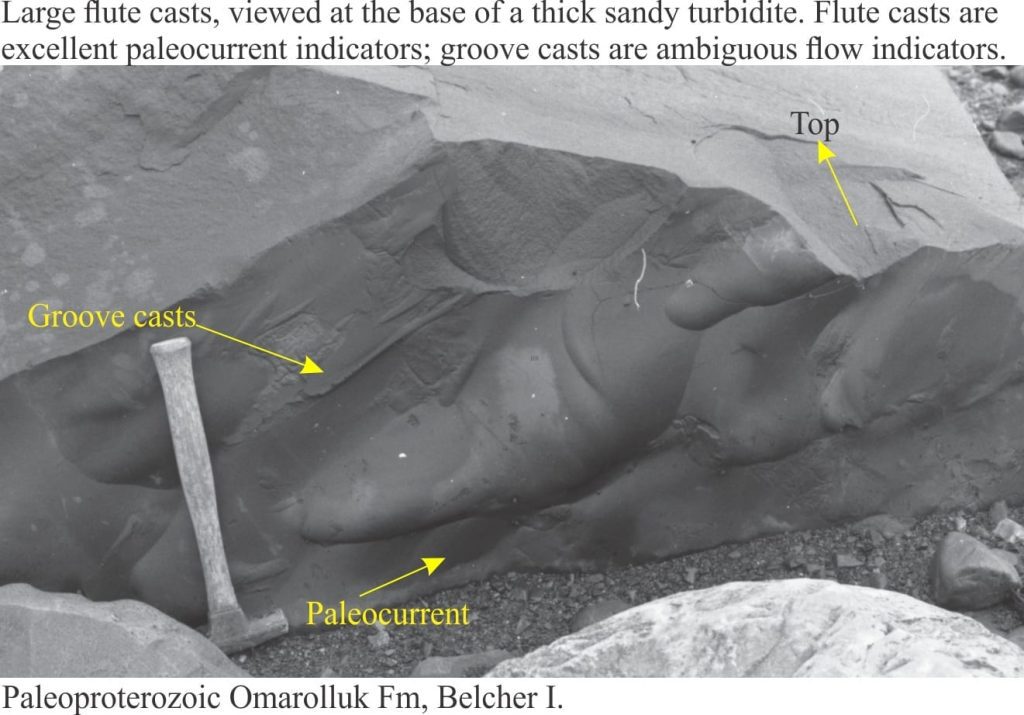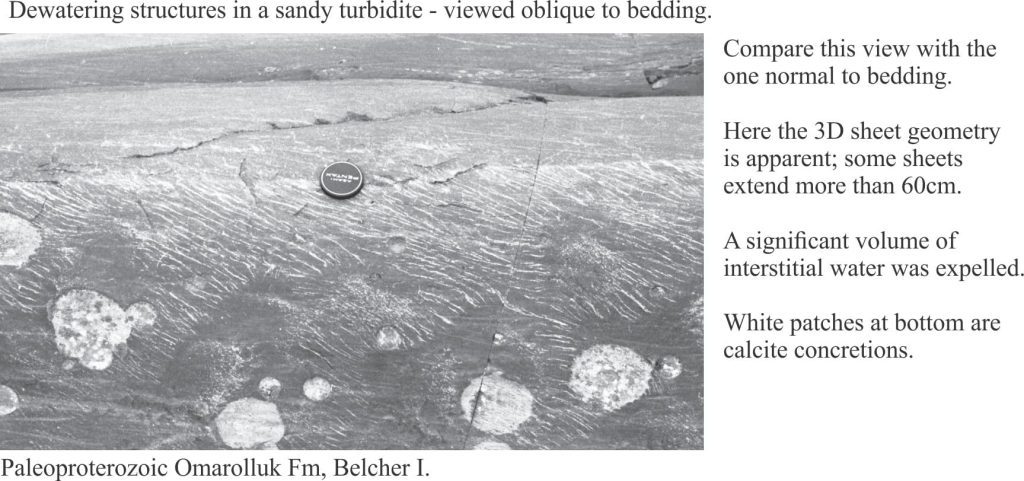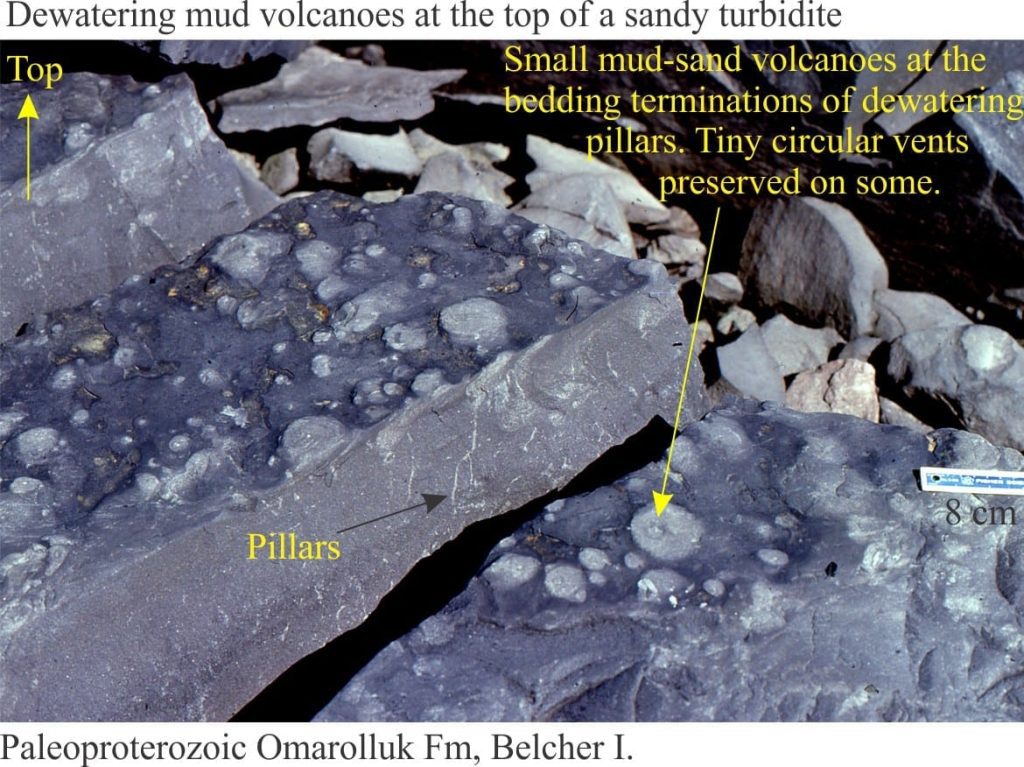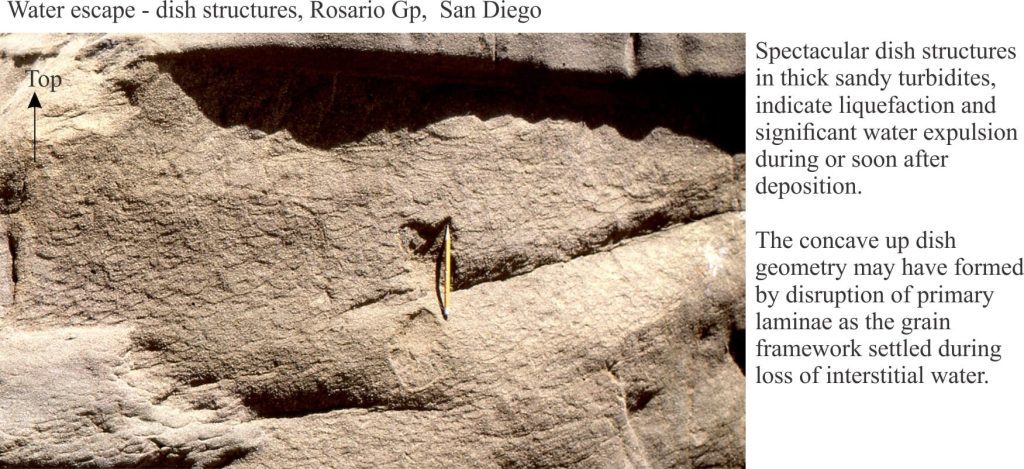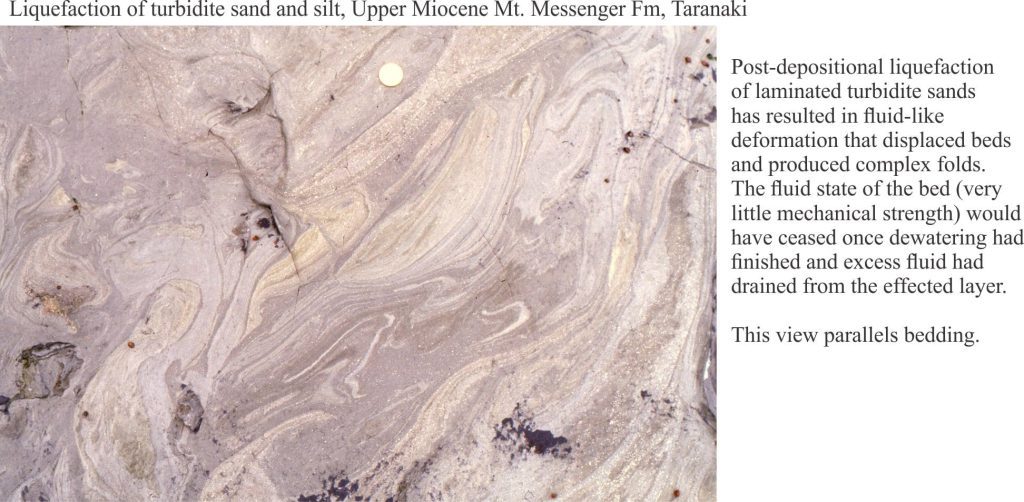A look at turbidites in outcrop
This is part of the How To…series on describing sedimentary rocks
Here are some annotated, close-up outcrop images showing details of sedimentary structures commonly found in turbidites. In each image, I have used the iconic Bouma Sequence notation (A through E intervals); reference is made to the Lowe Model (used for coarse-grained, commonly gravelly turbidites), and the Stow Model for fine, mud-silt dominated turbidites. The three models-schemas are summarized in the diagram below (modified from Stow and Smillie, 2020).
The images are organised approximately as follows, depending on the primary attributes I wish to emphasize:
- General attributes of turbidite flow units
- Dewatering and soft-sediment deformation
Mass Transport Deposits (MTDs) will be treated in a separate post.
I have no doubt there will be disagreements with some interpretations. Hopefully this will generate some discussion among students.
Most of the structures illustrated are at the bed scale – this is where students get their noses right up to the outcrop. I have not included more panoramic views of turbidite successions – for these I invite you to look at the Atlases.
Most of these images have been cropped from originals featured in the Atlas of submarine fans and channels, and Atlas of synsedimentary deformation.
Related links in this series on outcrops
Sedimentary structures: Alluvial fans
Sedimentary structures: coarse-grained fluvial
Sedimentary structures: Fine-grained fluvial
Sedimentary structures: Mass Transport Deposits
Sedimentary structures: Shallow marine
Volcanics in outcrop: Lava flows
Volcanics in outcrop: Secondary volcaniclastics
Volcanics in outcrop: Pyroclastic fall deposits
Other useul links
Sediment transport: Bedload and suspension load
The hydraulics of sedimentation: Flow regime
Fluid flow: Froude and Reynolds numbers
Liquefaction: More than a sloppy puddle at the beach
The hydraulics of sedimentation: Flow Regime
Describing sedimentary rocks; some basics
Analysis of sediment grain size distributions
Measuring a stratigraphic section
Sediment transport: Bedload and suspension load
References: Includes a couple of recent reviews
A.M. Hessler and A. Fildani, 2019. Deep-sea fans: Tapping into Earth’s changing landscapes. Journal of Sedimentary Research, v.89, p.1171-1179.
E.Meiberg and B.Kneller, 2010. Turbidity currents and their deposits. Annual Review of Fluid Mechanics, v. 42, p. 135-156. Excellent review of flow mechanics, observed and theoretical. Available for downloading.
G. Shanmugam, 2016. Submarine fans: A critical retrospective. Journal of Palaeogeography, v. 5, p. 110-184. Available for downloading
D. Stow and Z. Smillie, 2020 Distinguishing between deep-water sediment facies: Turbidites, Contourites, and Hemipelites. Geosciences, v. 10,. Open Access.
The first four diagrams show some basic sediment descriptors and terminology, and a typical stratigraphic column drawn from outcrop data. These are your starting points for describing and interpreting sedimentary rocks and sedimentary structures in outcrop, hand specimen, and core.


Graded bedding is one of the diagnostic structures of turbidites. This schematic view of graded bedding, shows the coarsest grains at the base, with finer grains toward the top of the bed. The matrix is commonly muddy (clay plus silt particles).
The images below use the Bouma nomenclature for turbidite depositional intervals. These can be cross-referenced with the nomenclatures formalized by D. Stow and D.R. Lowe.
Common turbidite structures
Soft sediment deformation and water expulsion structures

